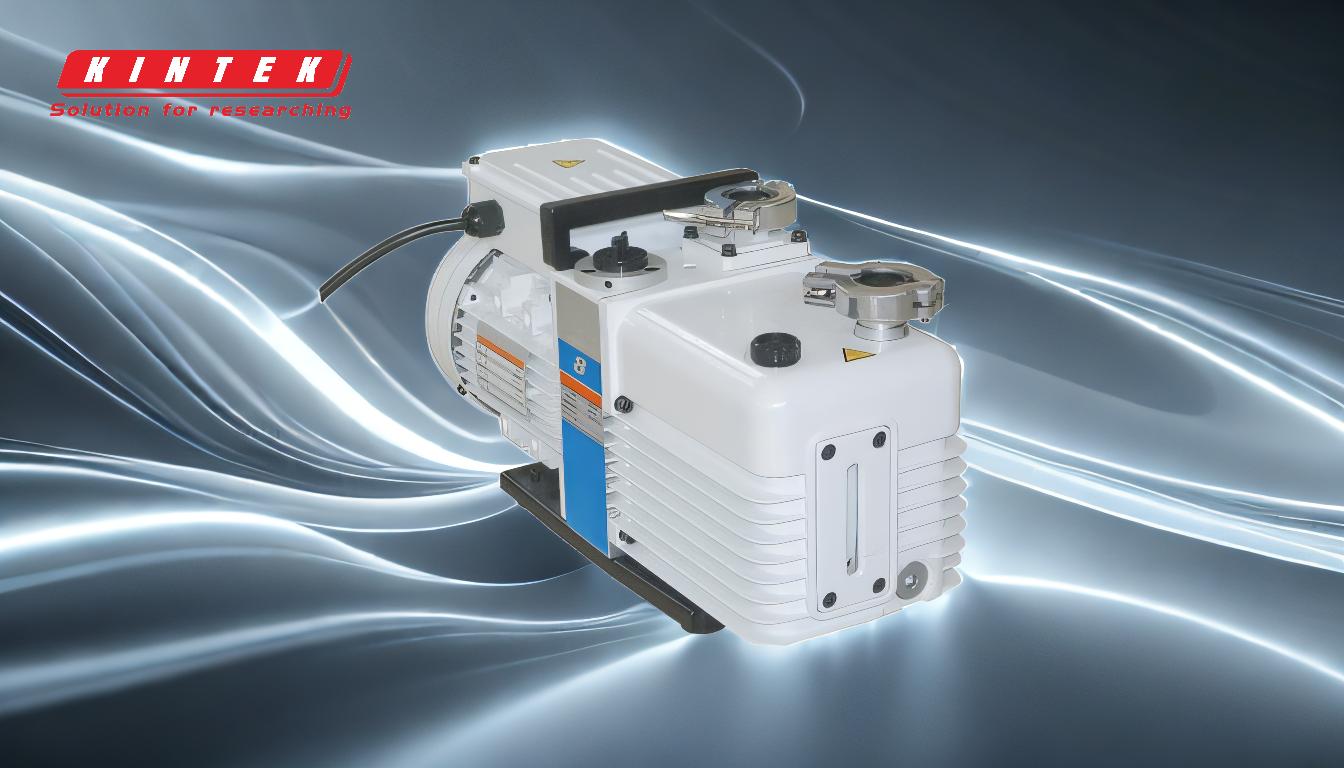A vacuum pump operates by moving gas molecules from one area to another, creating a pressure difference that allows air to flow from high-pressure regions to low-pressure regions. Unlike common misconceptions, it doesn't "suck" air but instead pushes molecules to achieve a vacuum. Specific types of vacuum pumps, such as rotary piston pumps, use mechanisms like eccentric wheels and slide valves to create compression chambers that facilitate the intake and exhaust of gases. This process is essential in applications like laboratory settings, where precise pressure control is required.
Key Points Explained:

-
Mechanism of Gas Movement:
- A lab vacuum pump removes air by creating a pressure differential. It does not "suck" air but instead pushes gas molecules from a high-pressure area to a low-pressure area. This movement occurs naturally as gases flow to equalize pressure.
-
Pressure Differential:
- The pump introduces a low-pressure space, causing gas molecules to move from the high-pressure environment (e.g., the chamber being evacuated) to the low-pressure area created by the pump. This process continues until the pressures balance.
-
Types of Vacuum Pumps:
- Different types of vacuum pumps, such as rotary piston pumps, use unique mechanisms to achieve this. For example, a rotary piston pump features an eccentric wheel and a slide valve to create two compression chambers. These chambers alternate between intake and exhaust strokes to move gases efficiently.
-
Intake and Exhaust Strokes:
- In a rotary piston pump, the intake stroke occurs in one chamber, where the slide valve opens to allow gas entry. Simultaneously, the second chamber undergoes an exhaust stroke, compressing and ejecting the gas through an exhaust valve. This dual-action system ensures continuous operation.
-
Applications in Laboratories:
- Lab vacuum pumps are critical for creating controlled environments, such as in filtration, distillation, or degassing processes. Their ability to precisely manipulate pressure makes them indispensable in scientific research and industrial applications.
By understanding these principles, users can better appreciate how vacuum pumps function and their importance in various settings, particularly in laboratory environments where precision and reliability are paramount.
Summary Table:
| Key Aspect | Description |
|---|---|
| Mechanism of Gas Movement | Pushes gas molecules from high-pressure to low-pressure areas, equalizing pressure. |
| Pressure Differential | Introduces low-pressure space to move gases until pressures balance. |
| Types of Vacuum Pumps | Rotary piston pumps use eccentric wheels and slide valves for efficient gas movement. |
| Intake and Exhaust Strokes | Dual-action system: intake stroke allows gas entry, exhaust stroke ejects gas. |
| Applications in Labs | Critical for filtration, distillation, and degassing in scientific and industrial settings. |
Discover how vacuum pumps can optimize your lab processes—contact our experts today!








